Men are more tolerant of the other side than women are of their own
New FIRE survey data provides useful insight into the drivers of Cancel Culture on college campuses and beyond
Suppose you’re a controversial left-wing speaker. Who do you think would be more likely to let you voice your opinions on campus: a slightly conservative man or a democratic socialist woman?
Now suppose you’re a controversial right-wing speaker. Who do you think would be more likely to let you voice your opinions on campus: a slightly liberal man or a somewhat conservative woman?
It may seem obvious that, regardless of gender, someone with a similar ideology would be more tolerant of your views. But recent data gathered by FIRE suggests that’s not always the case.
Amazingly, it turns out that men are often more tolerant of the opposite side than women are of their own side.
The data comes from FIRE’s annual College Free Speech Rankings, which is designed to gauge the state of free speech on American college campuses as well as student attitudes toward free speech. This includes gauging students’ feelings towards allowing various hypothetical speakers on campus, which we can break down by various characteristics. When evaluating the data based on gender, some shocking trends arise.
Men are, on average, significantly more tolerant and less censorious than women. By contrast, while political affiliation makes people more biased towards speakers on their side, it affects their overall willingness to let speakers speak, regardless of ideology, very little. However, regardless of party or ideology, men are significantly more tolerant than women, so much so that the gender difference dominates the ideology difference. This effect is even more acute in the extremes: men are over 3.5 times more likely than women to be “perfectly tolerant” of opposing views — meaning they would definitely allow any campus speakers, including those they disagree with.
To get a better understanding of these results, we’ll look at the Free Speech Map, a scatterplot of various groups’ left- and right-wing tolerance:
As the map shows, when it comes to overall tolerance of opposing viewpoints, no group — men or women — is doing particularly well. However, it also shows that men are significantly more tolerant than women, regardless of ideology. When assessing data within a given ideology, men remain much more tolerant towards both sides. We can tell this because, for each ideology, the male point is above and to the right of the corresponding female point on the map.
There is also a remarkably clear trend within each gender. With the slight exception of male libertarians, no ideological group shows a significantly higher total tolerance than the others — meaning that regardless of their affiliation, their average tolerance remains constant. And while left-wing women are stereotypically seen as being uniquely censorial, the reality is that this tendency applies to all groups of women, regardless of ideology.
We can make a similar plot by party affiliation:
Beyond the mostly-similar results, the most salient thing here is that, for both genders, Democrat-leaning independents are more tolerant of both sides than Democrats, and Republican-leaning independents are more tolerant of both sides than Republicans. Again, however, we see the stark effects of gender on these measurements: male Democrats are more tolerant of right-wing speakers than female Republicans.
While extremely illustrative, these plots belie some very important differences between individuals. To get a better sense for individuals’ various stances, we can show a heatmap where everyone’s positions are spread out across the map. The brighter and yellower a square on the map, the more people are there, showing where people tend to cluster. The darker and more purple the square, the fewer people are there:
Even when we hyperfocus on individual positions, the gender tolerance gap persists. Most men are clustered around the middle, with total tolerance mostly ranging from mediocre to decent. Men also tend to not exhibit much bias (see the linked addendum for more granular information on this), with most clustering near the diagonal. Amongst men, perfect tolerance (top right square) is uncommon but far from zero. We found that 6.4% of men are “perfectly tolerant,” compared to only 1.8% of women.
Women, by contrast, cluster toward the bottom-left of the heatmap, meaning that they’re less tolerant and more biased overall. Many women are on the bottom row of the heatmap, meaning low to moderate left-wing tolerance and zero right-wing tolerance. In other words, many women display extreme censorial attitudes, and only towards right-wing speakers.
The scatterplots above separated out people of each ideology, allowing us to compare like with like. The heatmap, however, takes the raw distributions for all men and women, meaning that we’re comparing a lot of moderate men to liberal women, which can potentially skew the data. To address this, we can look at another heatmap showing Democrats and Republicans specifically:
Even in a heatmap, however, the tolerance difference remains. Censorial attitudes aren’t really the disproportionate purview of an ideology (Republicans only do marginally better than Democrats overall), but they are the disproportionate purview of a gender.
This data provides some useful insight into the drivers of Cancel Culture at colleges and beyond — particularly the reasons for and dynamics around the silencing and opposing of right-wing speech. It’s not that women are especially censorial towards right-wing or dissenting views. Rather, it’s a combination of women being more censorial in general and tending towards being left-leaning. Another (likely, though not corroborated by our data) contributing factor is the fact that people who are more biased — which the data shows women tend to be — also tend to be more aggressive in implementing their censorial attitudes. And although the more recent surges of Cancel Culture on the right implicates more men than left-wing Cancel Culture (since men are more likely to be on the right), right-wing women are more likely to endorse censorship of the left.
So why does such a substantial gender gap exist? FIRE’s data doesn’t give us a confident answer, but these findings are consistent with decades of literature investigating political tolerance or support for censorship — which show that men are, on average, more tolerant and less censorial than women. The data does rule out a few possibilities. You might wonder, for instance, whether women are more censorial due to being more personally affected by the positions of the hypothetical speakers our surveys asked about. However, only one of the speakers argues for a position that disproportionately affects women (barring abortion), and the gender gap isn’t greater for this speaker, so that doesn’t seem to be what’s causing the gap. My suspicion, corroborated by other research, is that women have much stronger general opposition to speech that may cause emotional discomfort and a preference for harmoniousness.
So what do we do about this? Obviously, allowing all speakers no matter how controversial, and disallowing shutdowns or administrative censorship, is vital to free speech and open inquiry. Further research to determine what drives people to censorship and what can make them less censorial would be very valuable. Do courses that teach critical thinking and responding to ideologically diverse political arguments help? Do university-sponsored free speech or open debate events help? We need data to know, but some of these things may move the needle substantially.
Beyond the above, we must do one crucial thing: never abide censorship. The consequences of allowing censorial-minded people, no matter how well-intentioned, to call the shots and control discourse on campus have proved to be calamitous. Anyone who seeks to stifle debate for the sake of harmoniousness or emotional comfort must be publicly reminded that our most vital tool for setting right our wrongs depends upon having the strength to face often-uncomfortable opinions openly.
If you’re interested in delving deeper into this topic I have also drafted an addendum that addresses some more counterarguments, rules out other possible explanations for the discrepancies we see in the data, and discusses other nuances.
SHOT FOR THE ROAD
With news of Paramount/Skydance’s purchase of The Free Press and the appointment of Bari Weiss to editor-in-chief of CBS News dominating headlines lately, I thought it’s as good of a time as any to remind folks that tickets are still available for FIRE & The Free Press’ debate in Chicago on Nov. 5. Alan Dershowitz and Dana Loesch will be debating the question, “Would America be safer without the Second Amendment?”



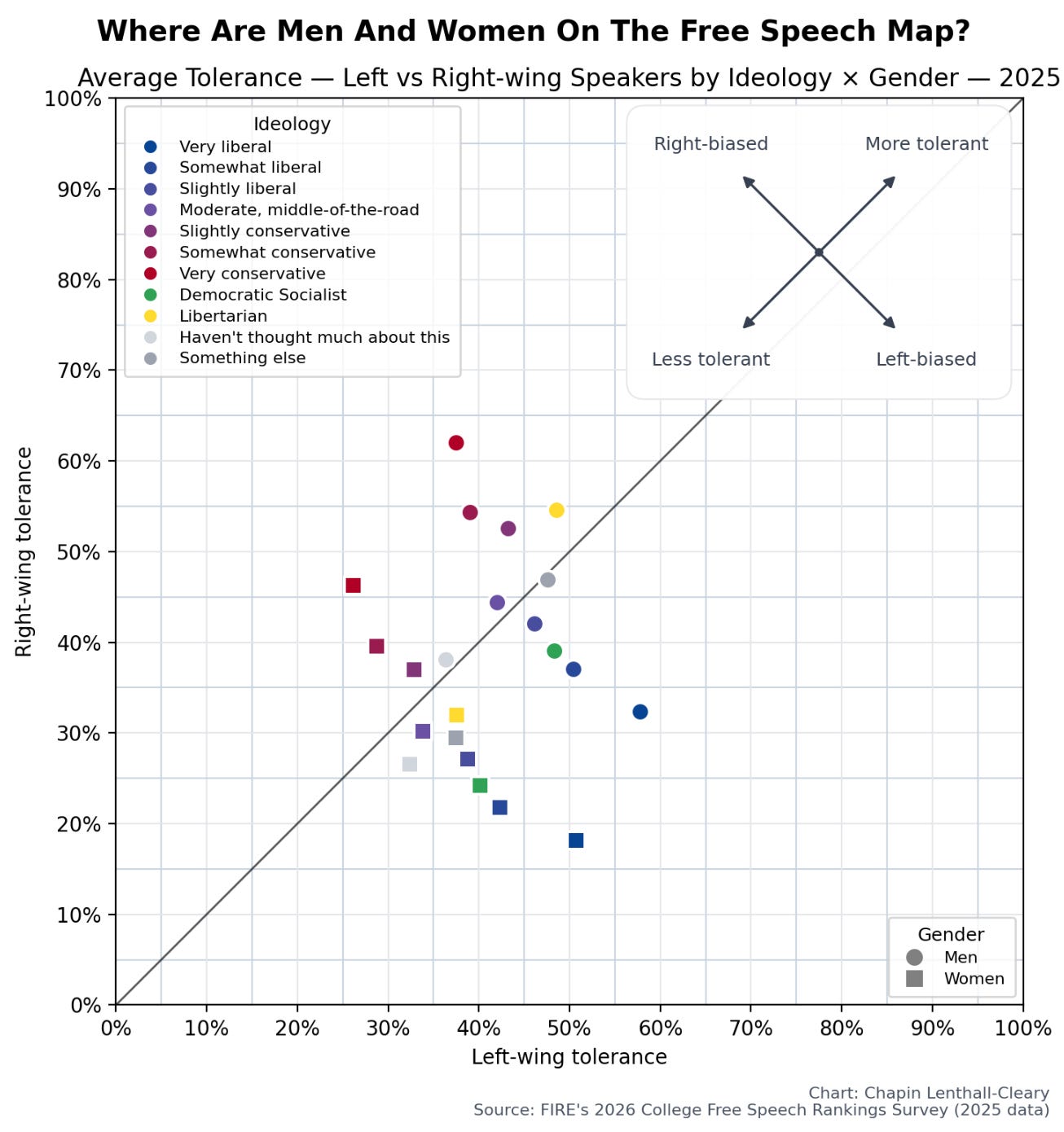
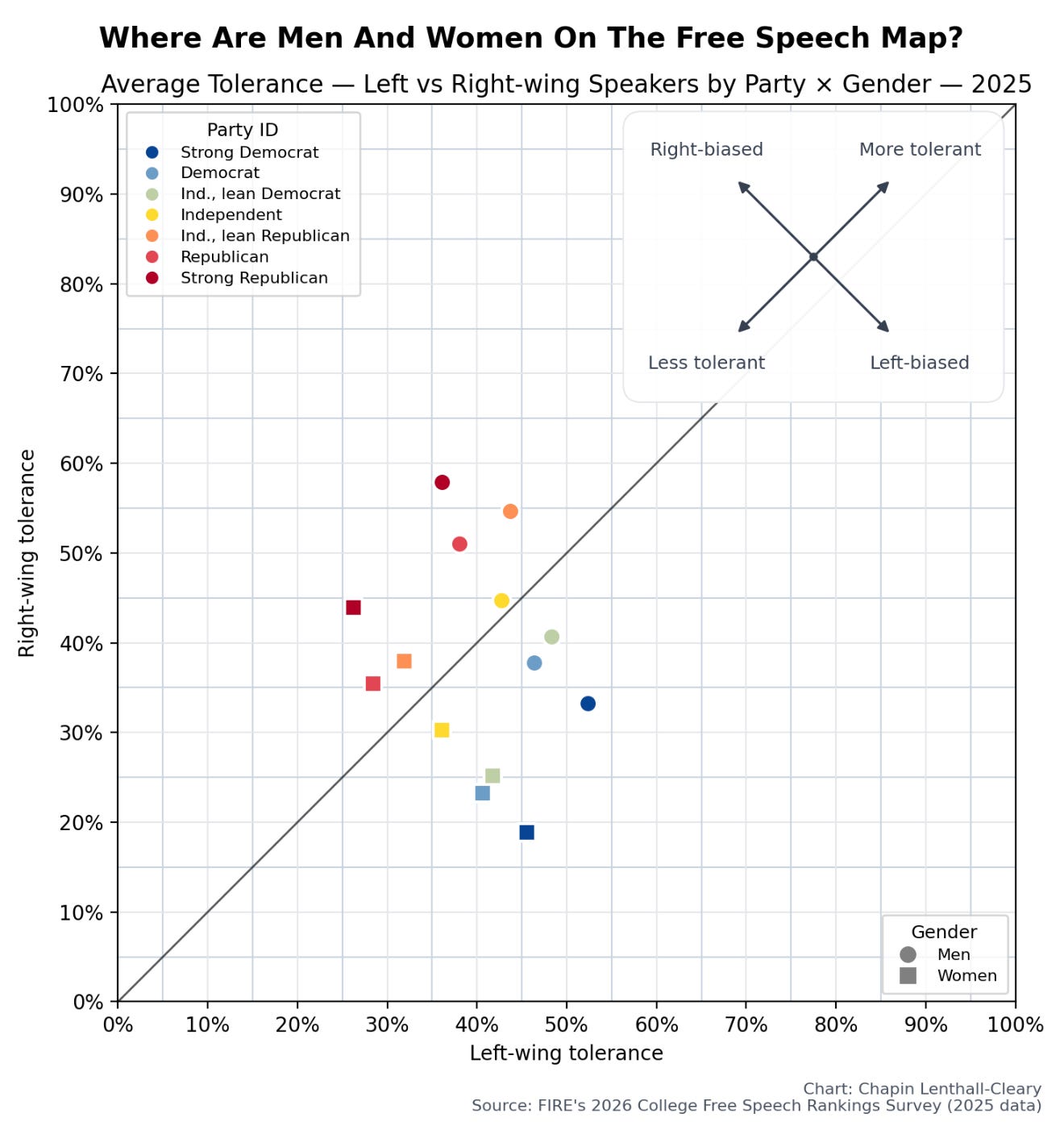
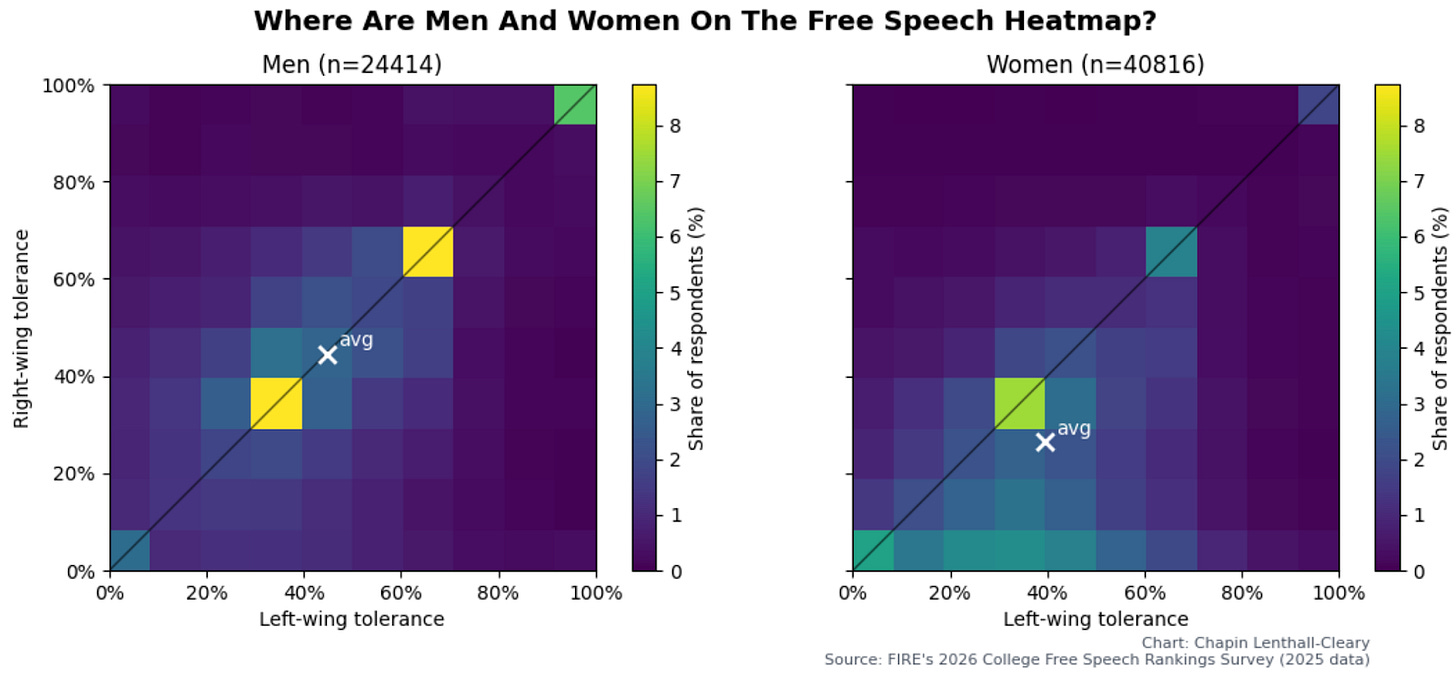
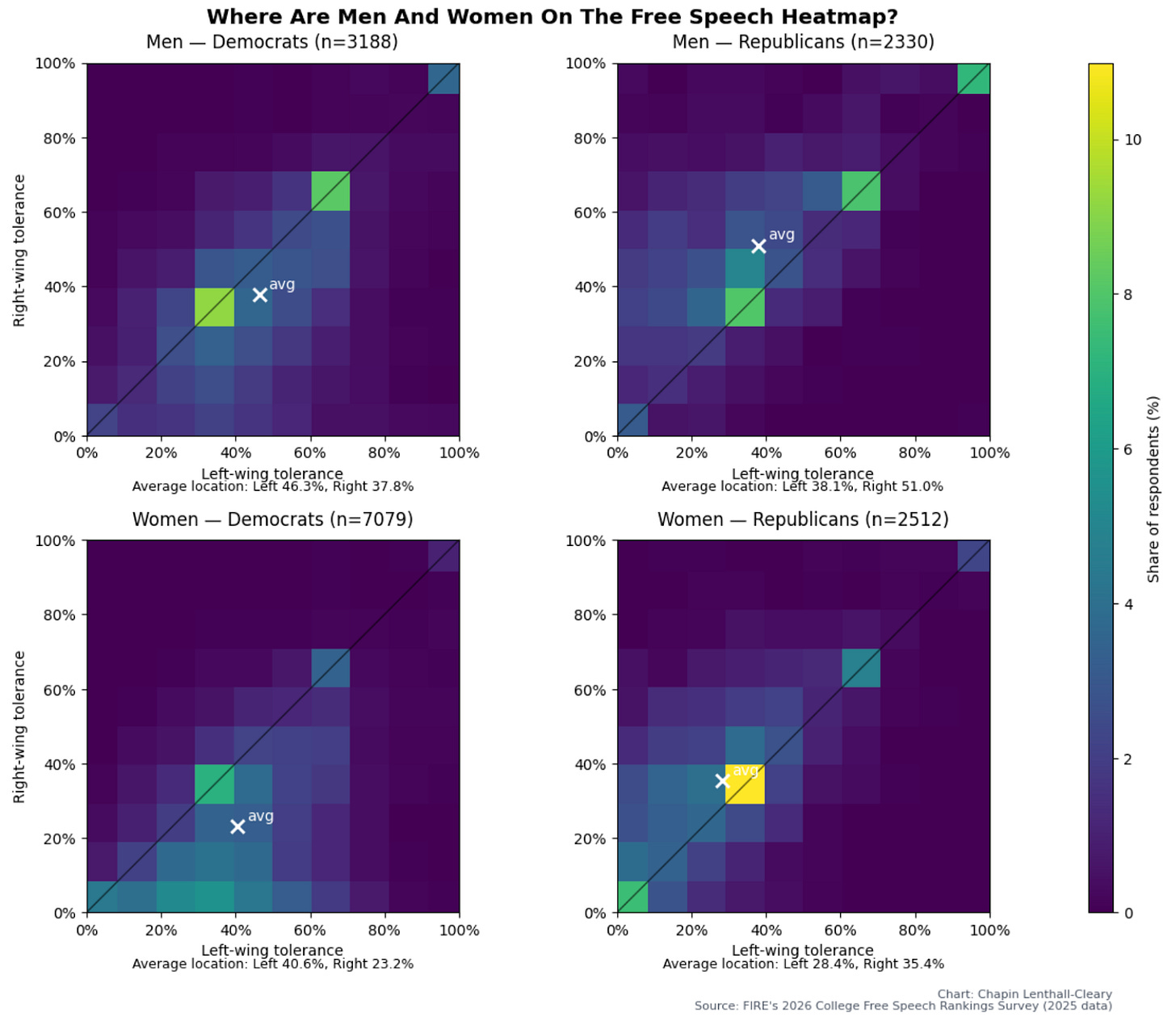
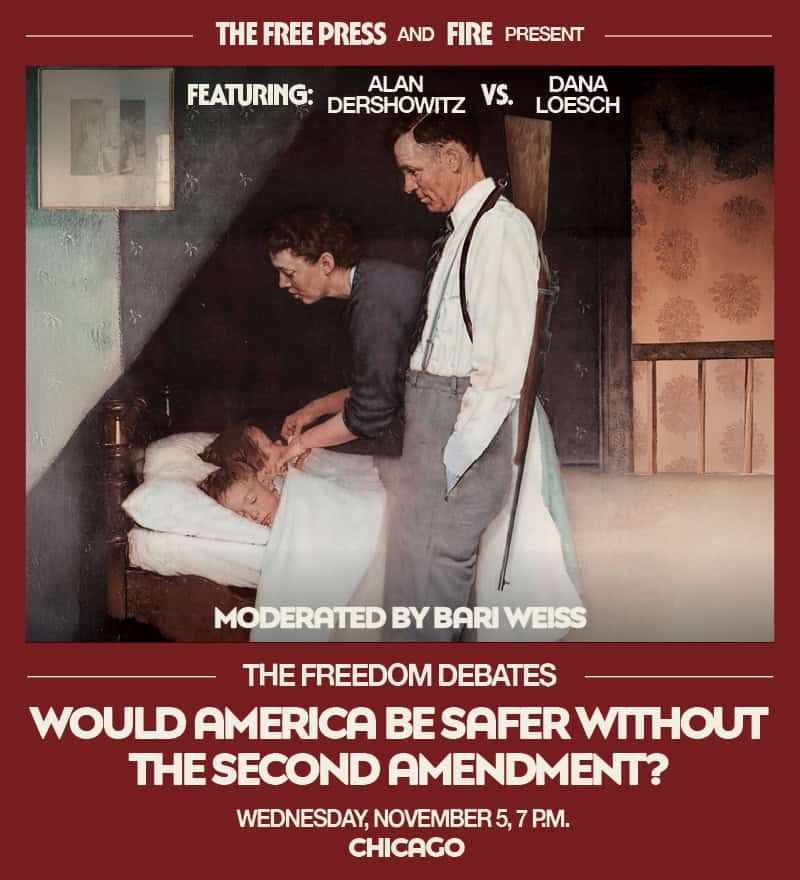

Sadly, I see this in university classes year after year. My male students often report feeling bewildered and silenced by their female peers' relative intolerance, but only in confidence to me (their female professor).
It’s interesting to see that men who identify as being liberal or just even slightly democrat are still as in favour or just as likely to be free speech advocates as much as conservative women. It seems like democrat men appear to be more progressive to appease democrat women, not because they actually believe it. Like in these studies when these guys are asked in private what they actually think with no judgement, they tend to be more free speech absolutist than they lead on in public.
Also, it should be super concerning that women are more censorious of their own side, a lot of the purity testing you see on both sides of the political aisle are what’s destroying American politics.